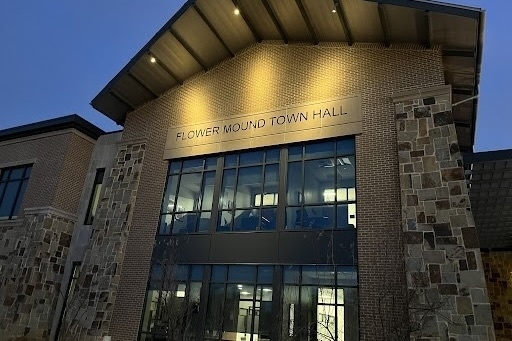Designs for buildings are something town officials pay attention to in Flower Mound, and at the city council workshop on April 20, council received an update about efforts to refresh its Urban Design Plan.
Updates explored:
- Updated images and graphics
- Glass percentages on buildings
- Colors and color schemes
Lexin Murphy, Flower Mound director of development services, said during the workshop that one of the town’s Urban Design Plan’s purposes is to provide direction on architectural design standards for the non-residential buildings in town. The design plan seeks to reinforce the Master Plan Vision Statement and connect the “built and natural environment” and “acknowledge and sustain the unique nature of the town’s corporate, commercial, suburban and rural lifestyles,” Murphy told council.
Town staff seeks to update graphics and images with the urban design guidelines for people interested in coming to town to build structures. Photos have not been updated since 2011, Murphy said, and updated design guidelines would have more details for applicants so they have a better understanding of what the town requires. It won’t change what the standards dictate, Murphy said, but it potentially could give better illustrations to help applicants. Council approved staff to proceed with updating graphics and images in the Urban Design Plan.
On glass requirements for buildings, the town wants to ensure that design is interesting and not “monotonous,” Murphy said. Facades may have a maximum of 50%-60% of windows and glass on their facades, and that is dependent on the number of stories. Council was asked whether the town should allow a greater percentage of glass and windows on buildings for facades not adjacent to streets or have two stories or more. Some council members expressed support for a higher percentage of glass that buildings could possess.
Murphy said information gained from council on glass likely would be taken to the Planning and Zoning Commission for a work session.
On palettes for building or business exteriors, Murphy discussed what colors may be allowed for structures, with at least 80% of each elevation of a building primarily needing to be earth-tone or natural colors. She showed 10 colors from the town, with these allowed colors ranging from brown to rust to sepia to white. In this portion of the discussion, Murphy examined accent colors and color schemes.
Councilmember Brian Taylor said he was open to seeing more colors and would like to see examples of what people have requested in the past and what staff would think is complementary to what it has now in its standards. Ultimately, the council expressed interest in seeing examples and visual representations of various colors and schemes to help them make an informed decision, Murphy told Community Impact in an email
Murphy said the town wants to ensure applicants will stay within the bounds of the Urban Design Plan guidelines while acknowledging there are limits to what town requirements can be imposed on developments.
“Part of this is just how can we make it better and more customer friendly,” she said.
When asked about color usage, she told the council the town often gets requests from an applicant wanting to use a color that is not on the city’s palette. Some applicants want to use their franchise colors, Murphy said. The town does not desire franchise architecture, but the town can usually work with people and come to a compromise on a design that fits the expectations of the town and be agreeable to the owners, Murphy said.





